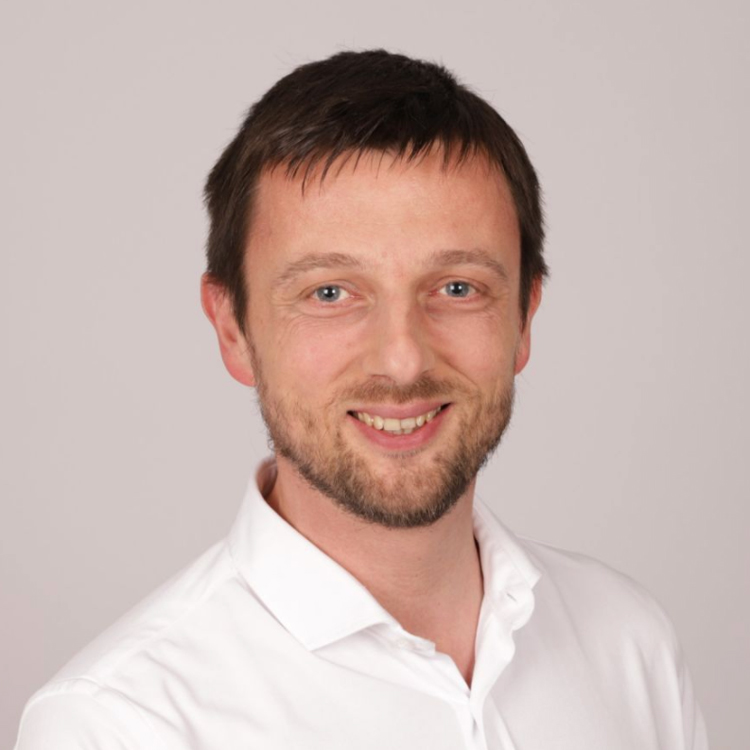
BEHIND THE INSIDER

Meet Thomas Gilbert, Co-Founder & CTO at Neterium.
Neterium is an innovative API-native company reinventing Financial Crime Prevention and responding to the explosion of market demand for highly performant, scalable and efficient watchlist screening.
Neterium’s ultimate goal is to allow clients and partners to achieve excellence in compliance while delivering frictionless customer service.
Built and developed by senior industry experts and top-notch technology specialists, Neterium’s team is unique.
80% of international banking transactions worldwide are screened today by solutions that the Neterium founding team had previously developed.
To spotlight the best insights of Neterium’s excellence, we ask a few questions to the inspiring crew behind it.
As part of a new series, Behind The Insiders, today we’re speaking to Thomas Gilbert, Co-Founder & CTO at Neterium.
1. Hello Thomas, can you tell us a little about yourself and your role as CTO at Neterium?
It has always been difficult to speak about myself. My name is Thomas, I am now 47 years old, and I am the co-founder of Neterium, which I created in 2017 after more than 15 years in financial crime prevention and screening engines development. The first two years of Neterium life were fully dedicated to building the product, with the support of Neterium’s other co-founder, Pascal Aerens. Our aim was to have a good market fit. As soon as we were ready to deliver Neterium’s solution, we wanted to transfer the leadership of Neterium to an experienced CEO as it is an entirely different job from what we were doing and from what we are good at. Sometimes in life, things come together perfectly, and we were lucky enough to onboard as CEO quite quickly Luc Meurant, who held numerous senior leadership roles at SWIFT, McKinsey and JPMorgan. That is how we structured the company from scratch and moved forward.
2. You said in an interview that in 2001, just after 9/11, you were unexpectedly assigned to a first payment screening project. How a simple requirement to fulfil became a quest and a massive problem to solve. Can you explain why? And what has been your journey since?
In 2001 I had the opportunity to start coding the first transaction screening SWIFT plugin. It was indeed a challenge at the time, but it was not too complex. Back then, the size of the watchlists was relatively small, counting only a few hundred names. To put it simply, my job was to search for all the variations of “bin laden” in an unstructured piece of data, strictly following the OFAC (Office of Foreign Assets Control) list. We were continuously challenged for this example, whereas the amount of false positive was not really the primary concern yet.
But since 2001, things have considerably changed. Today, nearly every country has its own sanction list; the KYC regulation requires customers to be screened at onboarding time and then regularly thereafter. The watch lists swelled by a factor of 3000 since 2001. With the size and the number of lists growing, including the PEP lists, applying the same 20-year old algorithms to this new landscape brings too many issues, and incumbent players struggle to adapt.
I’ve been lucky enough to work on four different screening engines before designing Neterium’s one, enough to face all pitfalls and take good note of what the market was expecting… and some of those expectations are clearly very difficult to address into a 20-year-old product, such as complete explainability, vertical and horizontal scalability or AI support. At Neterium we therefore re-started everything from scratch: based on a wholly new approach and aimed at high performance, Neterium’s product is designed to help any regulated company integrate an efficient list screening element in their KYC and transaction process without any friction.
“Neterium’s product is designed to help any regulated company integrate an efficient list screening element in their KYC and transaction process without any friction.”
3. As CTO, you built a tech team from scratch for Neterium. What does “Tech team” mean? What are the different tech profiles that you need?
There is no one "Tech Team"; many different tech profiles are brought together to create the product's tech. Coding the screening algorithms is not enough to build Neterium's product. We also require strong expertise in cloud computing and flexible architectures, security, AI-oriented profiles, linguistic knowledge, and UI talents for our internal tools.
Furthermore, I don't believe in "Tech Team" on one side and "Business Team" on the other. Neterium works completely transparently with regular meetings where the tech and the business teams talk to each other. We have built at Neterium a very agile model where we know that we need to move fast to address the needs of the market. The tech team needs to work with the business and client’s teams to make sure we are all moving in the same direction, delivering the best solutions.
4. Tech talent shortage is a real threat today. How were you able to hire and retain great talent in such a competitive environment?
Name screening, and even more transaction screening, is a niche market. Firstly, it can be considered an issue because it's even harder to find a profile aware of the problem we are trying to solve. On the other side, Neterium is bringing freshness and breakthrough innovation in a segment where most products are 15+ years old, which is appealing for a job applicant, especially with such a talented core team.
I also believe that we check all the boxes in today's tech gals or guys' shopping list: modern design, APIs, elastic cloud environment, AI, startup, bold global ambition and last but not least, a sense of purpose by playing an active role in helping fight financial crime. Finally, values are key to us. I cannot stress enough that Neterium is built on core human values of respect, fairness, transparency and personal development.
5. Neterium is a visionary API-native company that is reinventing financial crime prevention, based on very innovative SaaS solutions. As CTO how do you see Neterium’s technology evolving in five years?
We are currently operating in Europe essentially, so very concretely, the next milestone for Neterium is to expand our production environments worldwide, keeping the same expected level of security, availability and resiliency. Achieving the highest level of uptime is a core objective for us and we make that information publicly available.
Regarding the transaction screening aspects, I do not expect the migration to ISO20022 to be smooth. Features like our AI-based entity resolution in unstructured text will become more and more a great advantage.
As the volumes that we screen keep growing, we will also be able to propose advanced analytics about the quality of the screened data and the generated alerts while also developing, on the other side, real-time feedback to the watchlist data providers.
6. To build great products and great technology, you need to invest. How do you measure, as CTO, Neterium’s return on technology spending?
To be honest, given the design decisions that we took and our extreme focus as a company, we have the luxury of being able to be very selective in terms of where to invest in technology at Neterium: investing where we can bring a distinctive value. That’s the beauty of the cloud, where you can rent a cluster of 250 32-cores servers for two hours for a tiny amount of money… As a startup, our goal was to build a secure, resilient, fully monitored, auto-scaling and self-healing system which does not require lots of resources to work. This goal is now achieved. Beyond continuing to grow that infrastructure, a key technology objective will be to continuously invest in fine-tuning and enriching our screening algorithm to become the global leader in watchlist screening solutions.
Even more than technology, our key asset is our people. I am incredibly proud of the team we have, the level of experience we gathered and the dedication and motivation of the whole team, and that is the secret sauce.
7. What is your role model and why?
Actually, I don’t have a role model, and I don’t want to have one. I take my inspiration from all the friendly and talented people I worked with and take very seriously the feedback we get from our clients and the market in general. Nothing is more exciting than a customer saying, “Wow! This works exactly the way I want it! I would consider that being a model!